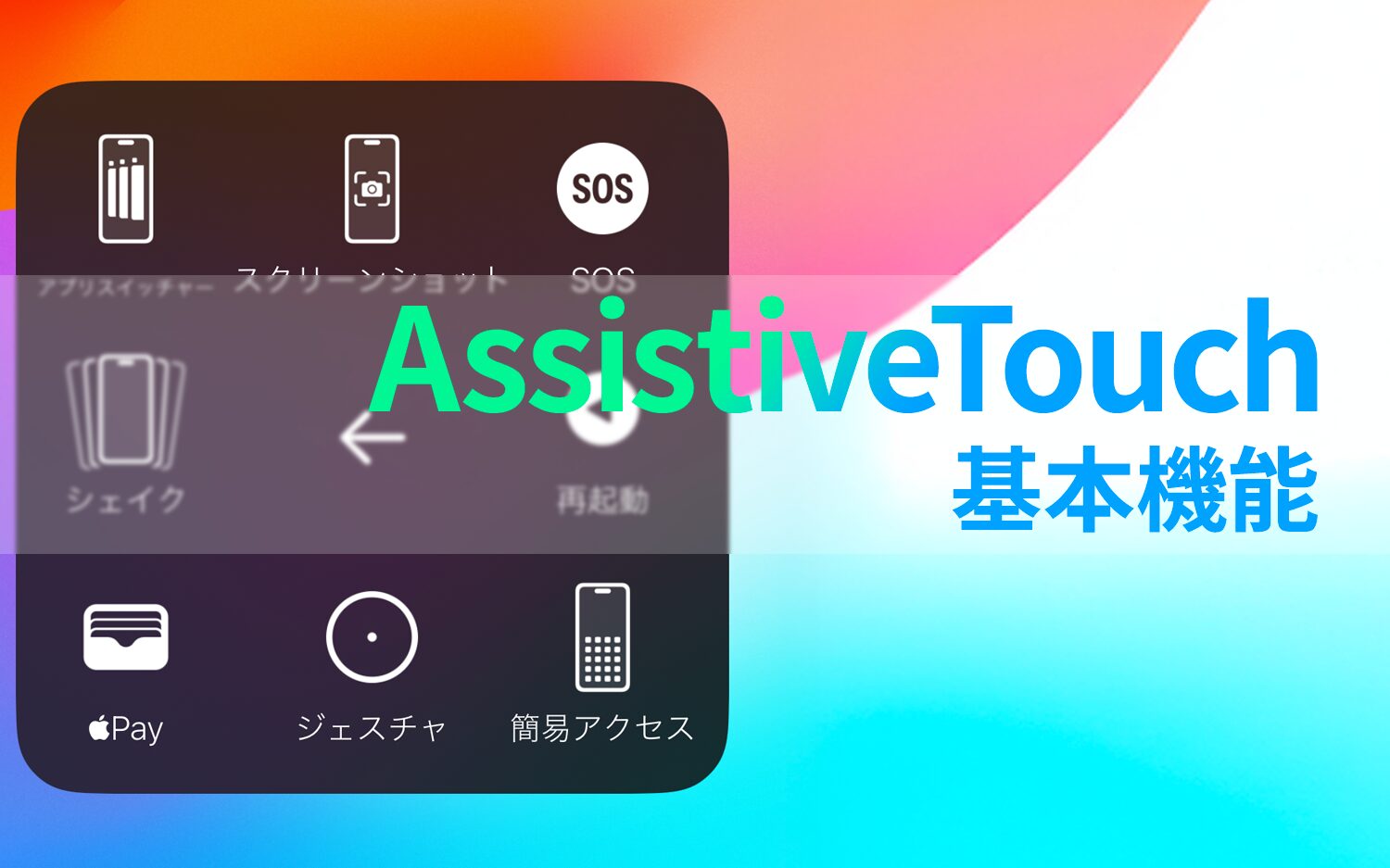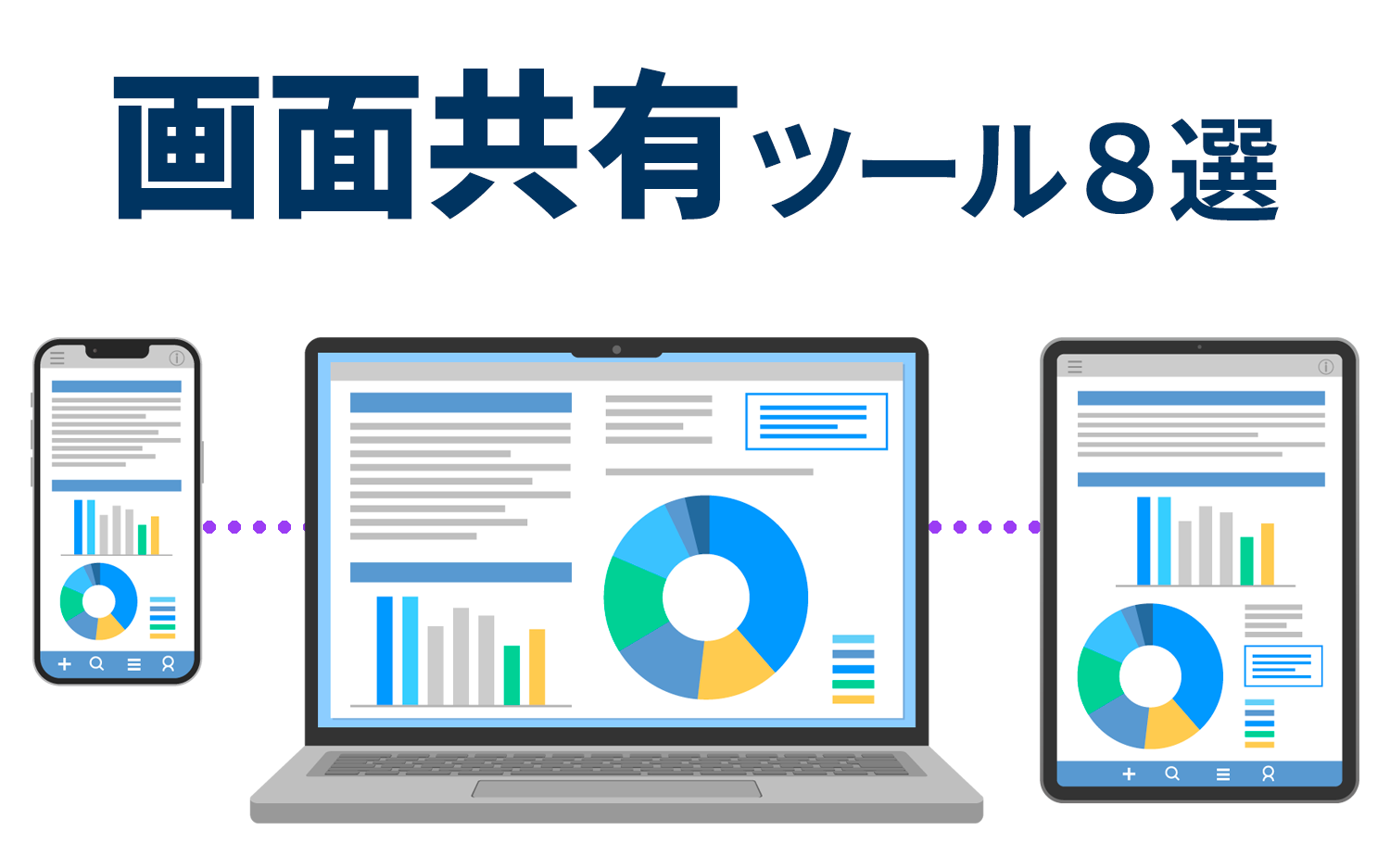Examples and methods of preparing "Sustainability Reports" for corporate staff.
2025/04/30

Sustainability Reportis a document for companies to organize and communicate their environmental, social, and governance (ESG) initiatives to the outside world.
More than just a report on CSR activities,It plays an important role in communicating the company's values and medium- to long-term management strategies to various stakeholders.
And also, this report is more than just a report, it's an important means of increasing corporate credibility and transparency, of creating a trusted report,It will help you build relationships with investors and business partners, as well as gain sympathy from job seekers and the general public.。
In this article, we will introduce examples of sustainability reports and explain their importance, the steps involved in their preparation, and common mistakes that are easy to understand for those who are new to sustainability reporting.
Table of Contents
Three excellent examples of sustainability reporting
When preparing a sustainability report for the first time, many people are concerned about what to show and how to show it.
So, from the reports that companies actually publish,Case studies of three companies with particularly visually appealing and distinctive contentpicks up on the differences in each industry and how they are structured.
Case 1: "Mitsui & Co., Ltd." Report design to integrate diverse businesses
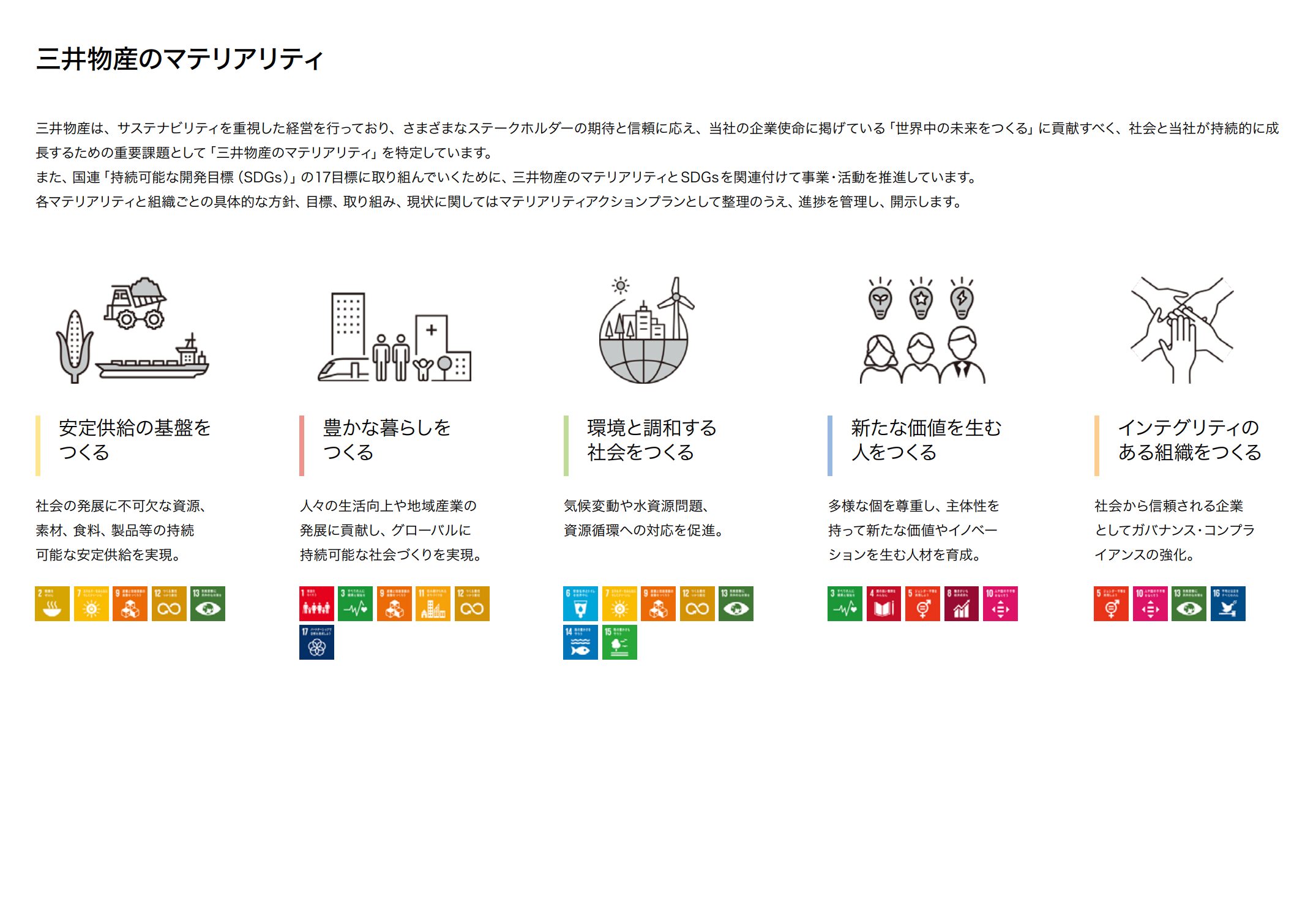
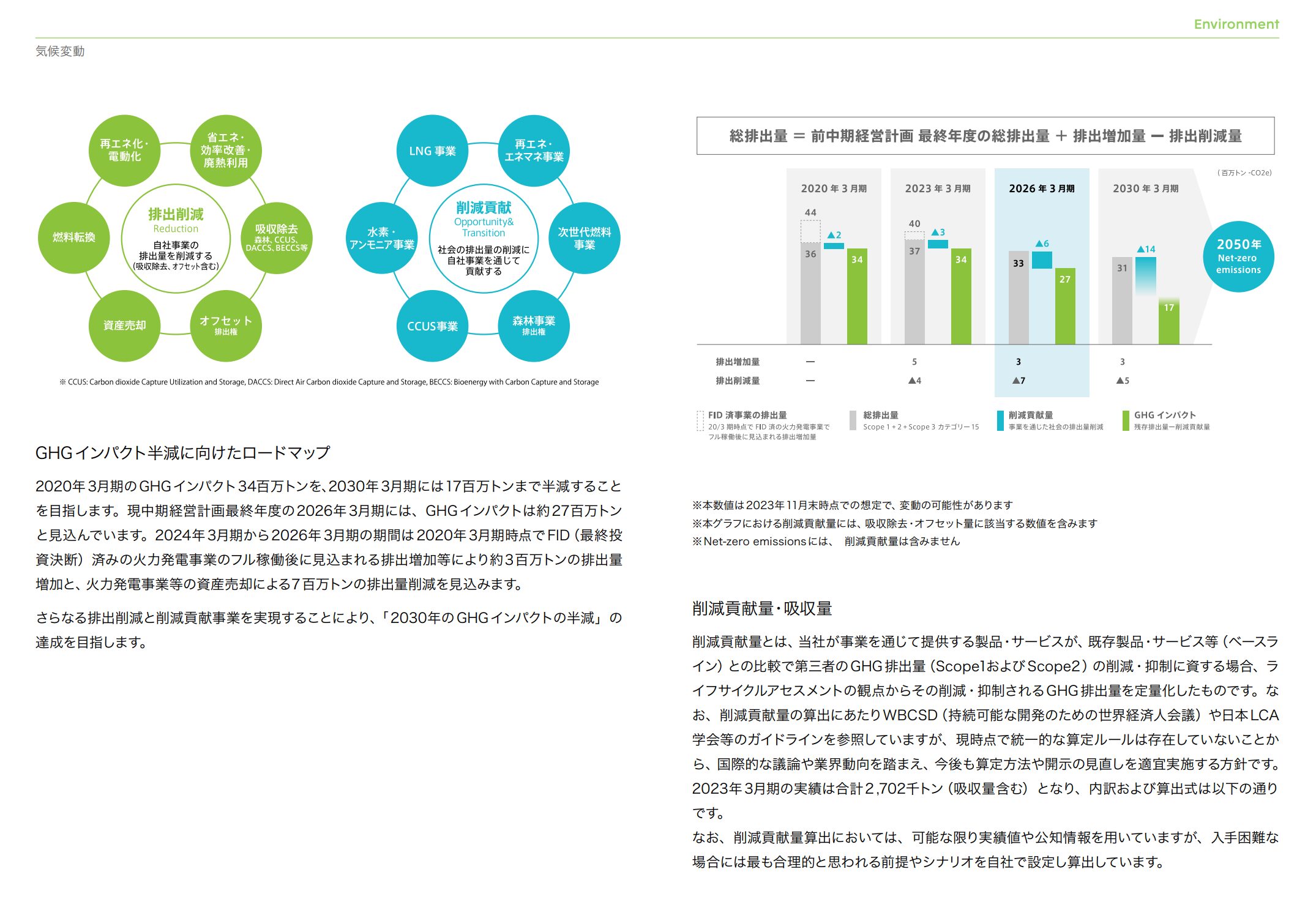
Mitsui & Co., Ltd. has compiled a cross-sectional report on specific actions and results for each ESG issue, covering a wide range of business areas unique to a general trading company.Particularly distinctive is that KPIs and progress for each issue are organized according to a framework called the "Materiality Action Plan.
In addition, the company has been progressive in its own initiatives to address climate change, such as the introduction of renewable energy through the use of company-owned forests and the implementation of in-house carbon pricing.
The infographics are appropriately scattered on each page, and the structure is superb without making the reader feel that there is too much information.
Case 2: Story development in harmony with the "Shiseido Co.
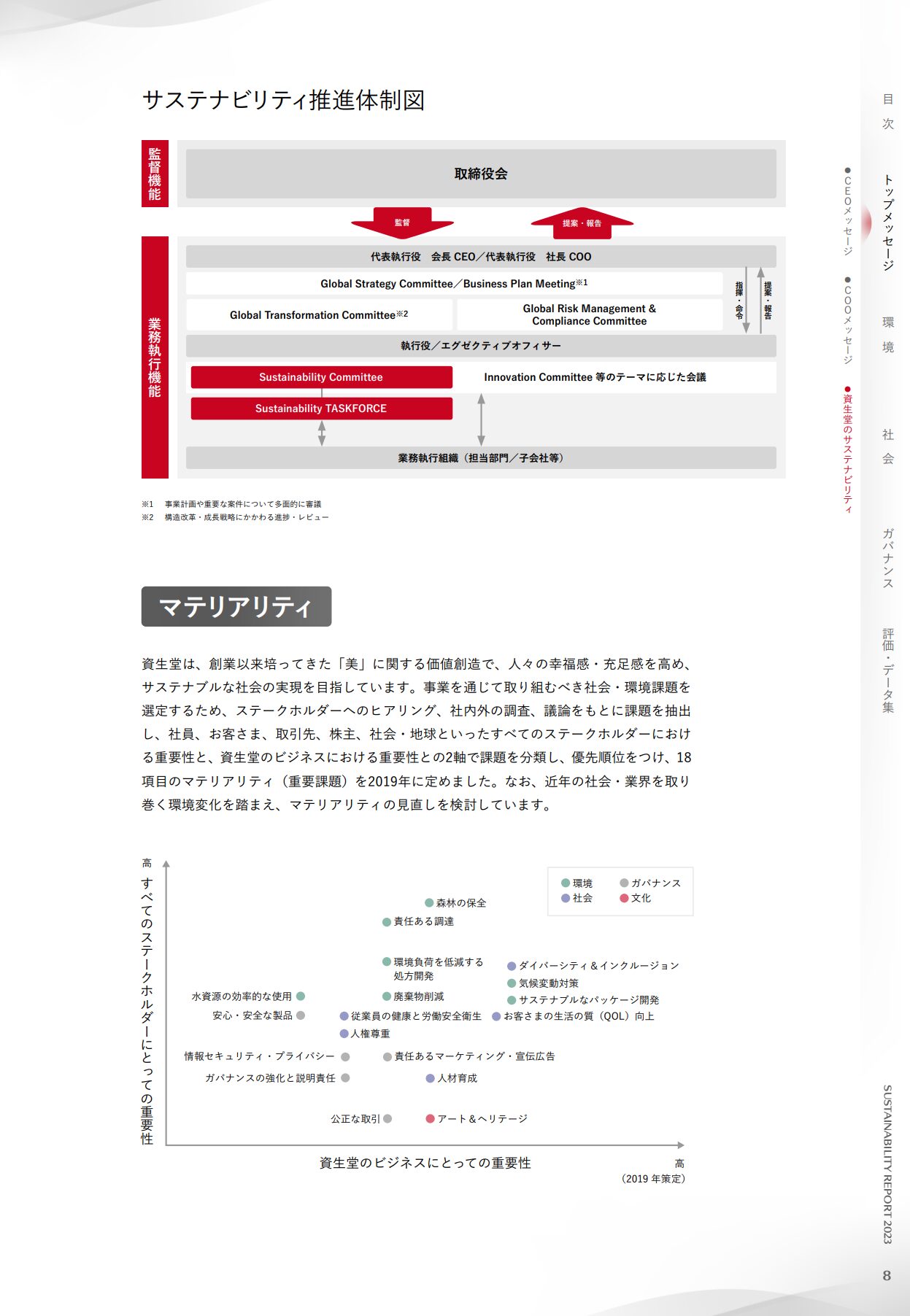
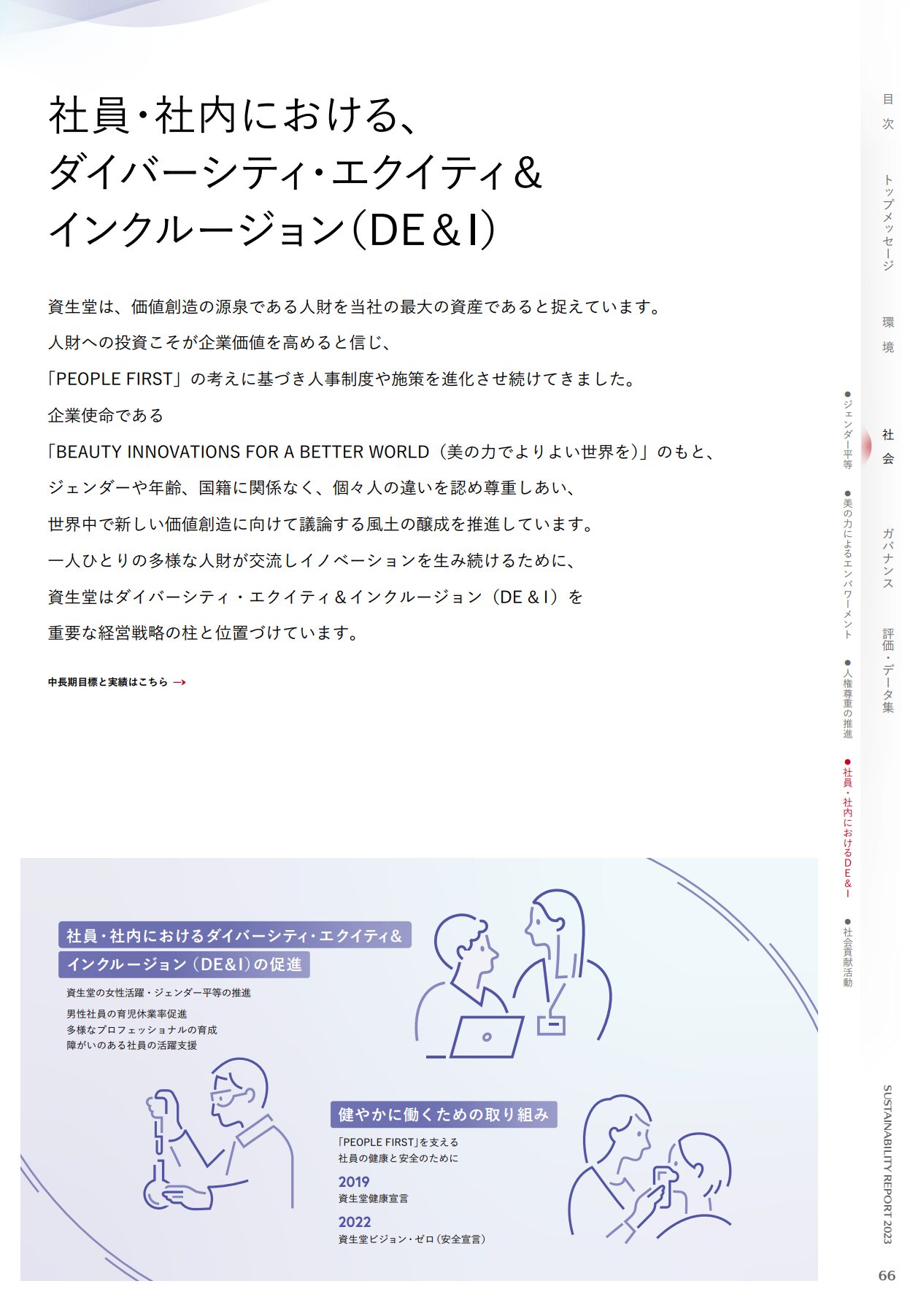
Shiseido Co., Ltd. report stands out for its visuals and narratives (storytelling) that combine beauty and sustainability.
Under the slogan "Beauty Innovations for a Better World," the company conveys its message on social issues such as the environment, human rights, and diversity in a manner consistent with the values of the brand.
Specifically, progress in reducing plastic use and the increasing percentage of women in management positions are presented in easy-to-read graphs and infographics.
In particular,It is characterized by its ingenious design of expressions that are easy for readers to perceive as "their own affairs," and by its strong viewpoint of gaining empathy with consumers.
Source:Sustainability Report 2023 (Shiseido Company, Limited)
Case Study 3: "Nippon Steel Corporation" Manufacturing Industry's Challenge to Decarbonize and Innovate
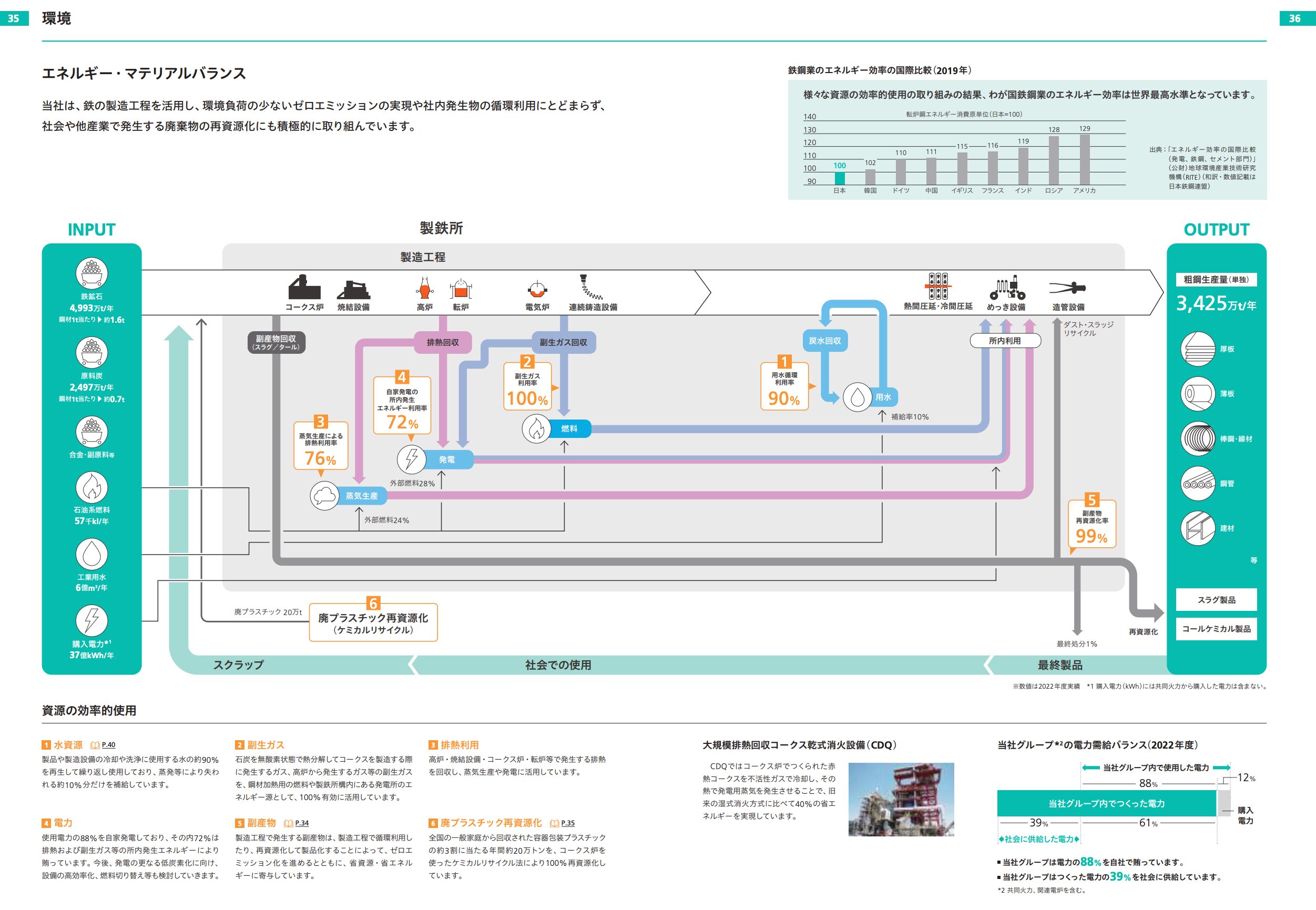
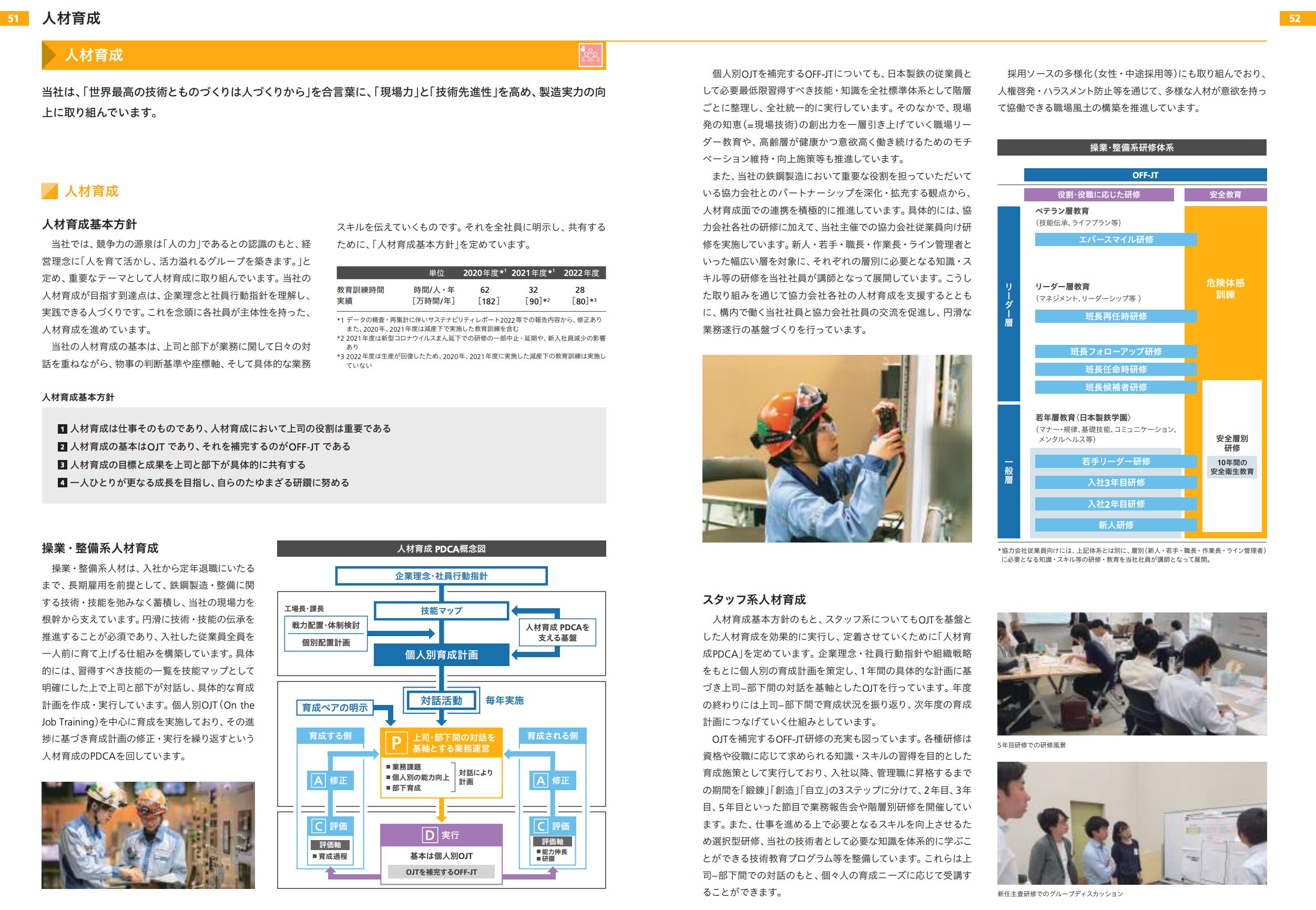
In the steelmaking industry, which has a high environmental impact, Nippon Steel Corporation has clearly demonstrated innovative efforts, including the development of the hydrogen reduction steelmaking process.
The roadmap to CO2 emission reductions is laid out according to a long-term roadmap, and the content conveys the fact that change is underway even in heavy industry.
The multifaceted approaches to the environment, human resources, safety, and community contributions are organized in detail, especially in a report on the manufacturing industry, which tends to be text-centered,Effective visualization using conceptual diagrams, process flow diagrams, graphs, etc.The reader's understanding is supported by the
Source:FY2023 Sustainability Report (Nippon Steel Corporation)
By comparing the reports of the three companies,It is clear that there are significant differences in composition and presentation depending on the type of industry and corporate stance.In the next section, we will explain the background and social significance of why such reports are now required of companies.
Background of the Importance of Sustainability Reporting
The Sustainability Report is an information disclosure tool that shows how a company is dealing with society and the environment and what it is doing toward a sustainable future.
The background of the importance of this report in recent years,Expand ESG investment and strengthen international disclosure standardsThese levels demonstrate how accessible a website is.
The CSRD (Corporate Sustainability Reporting Directive) and the development of international integrated reporting guidelines in Europe, as well as the establishment of the TCFD (Task Force on Climate-related Financial Disclosures) and the ISSB (International Sustainability Standards Board), have all contributed to this trend,Reliability and comparability of non-financial information is now required worldwide.
For companies,These changes are not mere obligations, but must be "presented" as part of the business strategy.That is why sustainability reporting is being redefined as not merely an extension of CSR, but as something directly related to a company's medium- to long-term value creation and competitiveness.
In this context, reports are not only to shareholders and investors, but also to business partners, employees, job applicants, and local communities,Means of building trust with all stakeholdersFunctions as such.
Rather than merely documenting activities, it is a means of communication that conveys the company's stance and future prospects by telling the story of why it is working on the project and what value it will create.
Also, for reliable reports,The three elements of "transparency, credibility, and continuity" are essential.
It should be published on an ongoing annual basis, objectively present figures and KPIs, and be structured in accordance with international guidelines (GRI, TCFD, ISO 26000, etc.).is directly related to the credibility and reputation of the overall report.
Sustainability Report Readership Diversifies
Our readership has also changed dramatically; traditionally it was mainly investors and financial institutions,Nowadays, job seekers, consumers, and even students are checking the sustainability stance of companies.The ratio of female managers, specific targets for CO2 reduction, and results of community contribution activities,Criteria for selecting a companyIt is not uncommon for this to be the case.
Thus, the Sustainability Report isEvolving into a strategic document that visualizes corporate value from multiple perspectives。
In the next section, we will explain the characteristics and significance of CSR reports in more detail, touching on the difference between CSR reports and CSR reports, which are often confused with each other.
Differences from CSR Report
In the past, the Corporate Social Responsibility Report (CSR Report) was widely used as a means of communicating a company's social initiatives.
The CSR report focuses on social contribution activities, environmental response, and volunteer efforts,It was a public relations tool that summarized the company's "good works".
In recent years, however,Re-evaluation of environmental, social, and governance (ESG) initiatives as directly related to a company's medium- to long-term growth strategy and risk managementThe "CSR Report" has evolved into a broader, more strategic "Sustainability Report".
The differences between the two are summarized below.
◆Difference between CSR Report and Sustainability Report
| CSR Report | Sustainability Report | |
| Main Purpose | Social Contribution and Public Relations | Explanation of sustainable management |
| Central Theme | Social and Community Activities | Environmental, Social and Governance (ESG) |
| target reader | Local Communities and Sei-katsu-sha | Investors, financial institutions, business partners, job seekers |
| Disclosure Information | Focus on activities | Including strategy, KPIs, risks, and results |
| Reference Standards | Many optional and proprietary formats | Based on international standards (GRI, TCFD, etc.) |
| Relation to Management | Tends to be somewhat disconnected from management | Integrated with management strategy |
Some companies are evolving from CSR reports to sustainability reports, and even to integrated reports that include financial information,It is a sign that non-financial information has changed from "bona fide reporting" to "strategic information that communicates the intrinsic value of management.
Simply put,A CSR report is "a report on what we are doing," while a sustainability report is "a strategic document that shows why we are doing what we are doing and how we are creating value.It can be said to be.
Next, we will explain in an easy-to-understand step-by-step manner how to actually prepare such a sustainability report.
Five Steps to Creating a Trusted Sustainability Report
This section provides a concrete and practical explanation of the process of creating a sustainability report, divided into the following five steps.
◆Five Steps to Sustainability Reporting
Step 1: Clarify objectives and targets
The first thing to consider is,Why are you making it? Who do you want to read it?.
The structure and tone will vary depending on whether it is directed at investors, clients, job seekers, or consumers, for example,If the target audience is consumers and students, then the emphasis is on empathetic storytelling and visuals.。
Clarifying who you want to deliver the message to will ensure that the message is not blurred and that it is structured around an axis.
Step 2: Identify necessary information
Gather existing internal documents, past CSR activity reports, records of study meetings on materiality issues, etc.
Interviews were held across departments andThe quality of the report as a whole will change if we understand the ongoing measures and figures, as well as the intentions behind them.In particular, KPI and quantitative data are easier to collect later if you start collecting them in the early stages.
Organizing the sources of information allows for reliable and reproducible report design.
Step 3) Consider the structure based on the guidelines
GRI Standard, TCFD, ISO 26000and other applicable guidelines will be selected and configured accordingly.
Story structure of "Strategy," "Goals," "Initiatives," "Results," and "Future Policiesand then assign the necessary elements to each chapter to maintain consistency of content.Materiality maps and SDG mapping may also be introduced as needed。
Compliance with public standards is an important perspective that helps to secure trust outside the company.
Step 4: Design and visual optimization
In order to convey the message well, the way it is presented is also important.Utilize infographics, diagrams, and color designThis will make it easier for readers to understand and remember.
Especially since more and more readers are reading on their smartphones, page design must be easy to read, easy to see, and easy to flip through!A structure that takes visibility into consideration not only promotes understanding of the content, but also has a significant impact on the overall impression of the report.
Step 5: Third-party review and improvement
After completion, not only within the company, but also, if possibleReview from external experts and partnersIn addition to helping you spot oversights and biases, a third-party opinion can also enhance the credibility of the report as a whole.
Don't end with the first edition,It is also important to have a viewpoint of improvement through a PDCA cycle every year.Continuous improvement is what will support the value of the report and the company's attitude over the long term.
A sustainability report is not a one-person job; it requires many steps, including collaboration among multiple departments, organization of information, and design of presentation,First, share the big picture and objectivesThis will lead to smooth reporting and effective dissemination.
Next, we will introduce "common mistakes" that are likely to occur in report creation and points to avoid them.
3 Failures and Avoidance Points in Sustainability Reporting
No matter how much effort goes into creating a sustainability report, it is meaningless if it doesn't resonate with readers; here are three often-overlooked patterns of failure, and what you can do to avoid them.
Failure #1: Reporting is focused solely on "internal reporting," and the stakeholder perspective is missing.
If you view the report too much as a "record of the company's activities," you can't help butEnumeration of "Things I've DoneIf you only list inward-looking results, such as the details of implementation and the number of initiatives, it is difficult for the reader to see the meaning and value of the project.
However, the original readers are external stakeholders: investors, business partners, job applicants, local residents, etc,If you do not convey "what value there is" from an external perspective, it will not resonate with readers.
◆Avoidance points
In addition to clearly stating "to whom the report is addressed" at the beginning of the report, it is also effective to
We would like to realize a ________ society through this initiative.Messageto put in key points.
From the previous yearChanges or improvementsand show consideration for readers who continue to read with interest.
By thinking of the reader as the "presentation partner," the structure of the text and the narrative naturally become more outward-looking.
Failure #2: Listing only indicators and not the story
While quantitative results are important, they do not convey a company's attitude toward its initiatives.
The reader wants to know,Why are you doing what you're doing?" and "Why are you focusing on those indicators?"This is the background and intention of the project.
In order to deliver a company's message, it is important to convey not only the numbers but also the story behind them.
◆Avoidance points
Sustainability reports are about "stories," and numbers are part of the story.
What are the KPIs and performance indicators?Show a series of stories from "Background" to "Goals" to "Results" to "Future Prospects" of the initiatives.This makes it more persuasive.
If possible, include testimonials from the department in charge and photos of the site,Conveying the temperature of the efforts behind the numbers will also be more persuasive!。
Failure 3: Formality is all but lacking in substance.
Even if you comply with international guidelines (GRI, TCFD, etc.) in form, you may lose credibility if you don't have the actual situation in place,If the key content is thin, readers will be sensitive to its discomfort.。
If the company shows that it is responding to the request because it has disclosed the information, the reader may distrust it, saying that the actual situation is not in line with the request.
◆Avoidance points
Guidelines are only a "frame"; what you really want to communicate isIs it told in the company's own words?is important.
For example, the top management's message should include a vision of the future in his or her own words, and an introduction of the initiatives of front-line employees.
A sustainability report is not something that can be simply produced.Dialogue tool to build trust with the readerand it is important to note that if it is designed incorrectly, it can be counterproductive.
Conclusion
Sustainability reports are more than just a means of information disclosure.
Now that sustainability has become an important management issue, how companies deal with society is a topic that not only shareholders and investors, but also business partners, employees, and even consumers are paying attention to.
Transparent communication" through the Sustainability Report is the reason for trust, empathy, and selection.
In preparing a sustainability report, it is extremely important to carefully construct "what to communicate, to whom, and how to communicate it," bearing in mind that it is the foundation of trust in corporate activities.
-
Contact Us
-
Request Info
-
Free Trial
-
Partner System



